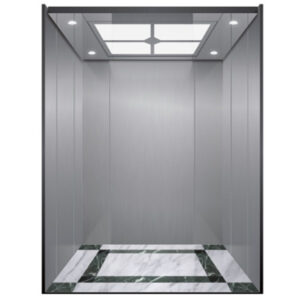Содержание
ПереключатьReplace the Elevator
In the fast-paced world we live in, accessibility is paramount. A significant aspect of this accessibility lies in buildings’ elevators. If you are considering how to replace the elevator in your building, it is essential to approach this task with careful planning and insight. This article provides guidance on the steps to take, the advantages of a modern elevator, and the potential positive impacts on your tenants and visitors.
Understanding the Need to Replace the Elevator
Before making any decisions, it is crucial to understand why you might want to replace the elevator. Perhaps the existing one has mechanical issues, is outdated, or is not compliant with current regulations regarding accessibility. For instance, an old elevator may have slow response times, rough rides, or inadequate space for wheelchairs. These factors can deter individuals with disabilities from accessing your building comfortably.
Imagine a family visiting a relative residing in a senior living facility. If the elevator is frequently out of order or too small to accommodate a wheelchair, it limits their freedom and could lead to safety hazards. Thus, this scenario highlights the need to replace the elevator for improved accessibility and overall satisfaction.
Planning for Replacement
Once you have identified the necessity, the next step is planning the replacement process. Start by outlining clear objectives: What are your goals? Is it merely to comply with local building codes, or do you aim to enhance user experience? Engaging with an experienced contractor begins with analyzing these needs and ensuring the selection of a suitable replacement.
Consider this example: a commercial building where a robust elevator system is vital for daily operations. If the business often faces delays due to elevator malfunctions, productivity suffers. Therefore, during the planning stage, look for modern, durable, and energy-efficient options that can cater to high traffic while ensuring reliability.
Choosing the Right Elevator
One of the pivotal steps in learning how to replace the elevator is understanding your options. Elevators come in various types, including hydraulic, traction, and machine-room-less models. Each type offers distinct benefits that can influence your building’s accessibility.
For instance, a traction elevator can be ideal for mid-rise buildings. It is known for its energy efficiency and ability to move quickly, which is crucial in a busy office or residential setting. When deciding on the specifics, consider additional features such as voice alerts for visually impaired users, smooth doors that facilitate easy entry and exit, and smart technology that can predict peak times for usage.
Cost Considerations
It’s essential to evaluate the budget for your new elevator. While the initial cost might seem high, balancing the short-term expense against long-term savings is critical. Modern elevators often use less energy and require fewer repairs due to advanced technology.
For example, if you replace the elevator with a more energy-efficient model, you may notice a decrease in utility bills over time. Moreover, if you operate a building that prioritizes eco-friendliness, using sustainable materials in your elevator replacement can significantly boost your property’s appeal.
Installation and Timing
Once the decisions are made, the installation process begins. It’s vital to communicate openly with your contractor and ensure minimal disruption during this period. Consider timing the replacement during low-traffic periods to avoid inconveniencing tenants and visitors.
You might designate one elevator to remain in service while another is being replaced, allowing your building to retain functionality throughout the project. This tactic demonstrates foresight and customer care.
The Final Step: Evaluating the New Installation
After replacing the elevator, evolving expectations requires monitoring. Gather feedback from users about their experience with the new elevator. Are the ride times efficient? Is it easy to navigate for all users? Use this information to fine-tune maintenance schedules or consider additional features.
In conclusion, replacing the elevator in your building enhances accessibility and significantly impacts overall user satisfaction and operational efficiency. As we move towards a more inclusive society, this improvement is essential for both compliance and the well-being of your tenants. By ensuring you adopt the best practices for how to replace the elevator, you facilitate a more accessible future for everyone. Take the step today — replace the elevator for a better tomorrow.


